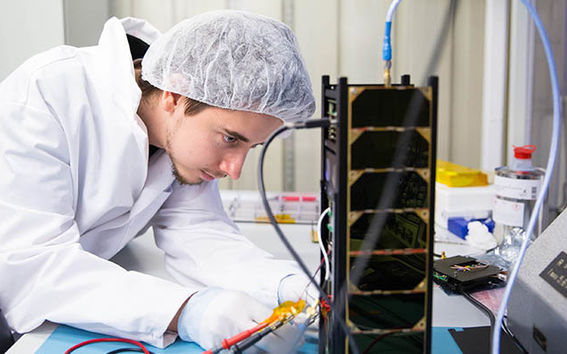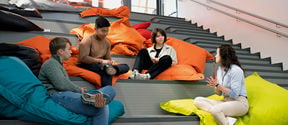Radiation influences Aalto-1 nanosatellite software design

The Aalto-1 nanosatellite uses fairly ordinary electronic components which are not specially designed to withstand radiation in space. However, the degree of reliability can be increased through good software architecture which takes into account possible failure scenarios caused by the environment.
‘Joonas Javanainen, an information technology student, carried out some excellent work and in his thesis he analyzed effectively the Aalto-1 satellite’s software and its failure recovery mechanisms. The satellite’s software uses the Linux system and the software has been designed and written by students from Aalto University’, explains Professor Jaan Praks who is responsible for the Aalto-1 nanosatellite project.
‘As the result of radiation in space, a single bit can be changed somewhere in the computer. The errors are caused by the environment and they would happen anyway, even if the programming was perfect’, points out Joonas Javanainen.
Even if a bit is changed because of radiation, it does not necessarily affect the functioning of the satellite, but in the worst case it could cause calculation errors or crash the software. On the other hand, radiation can also cause permanent damage to the functioning of the equipment.
Watchdog mechanisms increase reliability
Several watchdog mechanisms are used in the satellite which monitor the different parts of the system and can, for example, re-boot the satellite if a problem occurs. Communication with the earth station is also monitored and the satellite can change the radio it uses automatically if nothing has been heard from the earth station for a long time.
‘Reliability can be improved using methods that detect bit errors. For example a command coming from the earth station can be corrupted en-route because of bit errors, but the system can detect this and request the earth station to resend the command’, explains Javanainen.
The most important parts of the satellite are duplicated, but only one of the two devices is used at a time. In the event of failure of a device the spare can be used. Physically, it is not possible to access the nanosatellite’s software after the launch. Of course the software can be updated via a radio link, but in the main the satellite has to look after itself.
‘We have to prepare for challenges and changing bits before launch and that means we have to find the golden mean, a suitable level of preparedness. The more complicated the software becomes, the more it can cause additional problems and the more expensive the nanosatellite becomes too’, observes Javanainen.
‘Joonas’ thesis is also an excellent example of the collaboration that the students from different disciplines have engaged in on the satellite project. Building equipment for space requires skills from many different disciplines’, concludes Praks.
Aalto-1 is a miniature research satellite, the first in Finland, and its objectives are scientific. According to the latest estimate, Aalto-1 will be launched into space in July 2016. Aalto-1 will take three complex devices into space that have been built by Aalto University’s partners. A large and changing team have been involved in building the nanosatellite, on the software side a total of some ten people have worked on it as part of their undergraduate, masters and special project work. Before starting work on his thesis, Joonas Javanainen studied the satellite and its functioning for several months.
More information:
Professor Jaan Praks
Responsible leader of Aalto-1 student satellite project
Department of Radio Science and Engineering
tel. +358 50 420 5847
[email protected]
Professor Keijo Heljanko
Department of Computer Science
tel. +358 50 430 0771
[email protected]
- Published:
- Updated:
Read more news

Teamwork First-Aid Kit supports students in project-based courses
This online resource offers tools to support student teams throughout project courses.
Aalto ARTS alum Vidha Samya’s artwork featured at the Venice Biennale 2024
The Pavilion of Finland presents ‘The pleasures we choose’ at the 60th International Art Exhibition – La Biennale di Venezia until 24 November 2024.
IoT Forge donates EUR 1 million to the School of Engineering
The donation will be used for research and education on the Industrial Internet and digital twins.